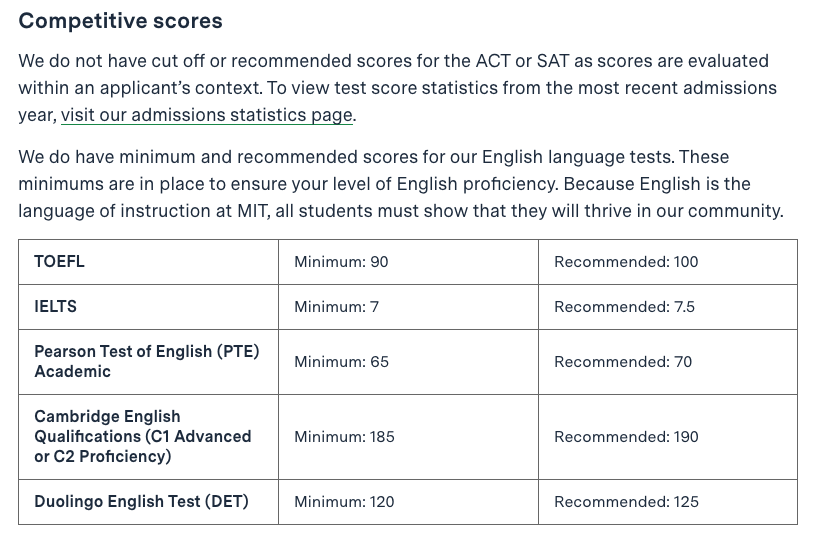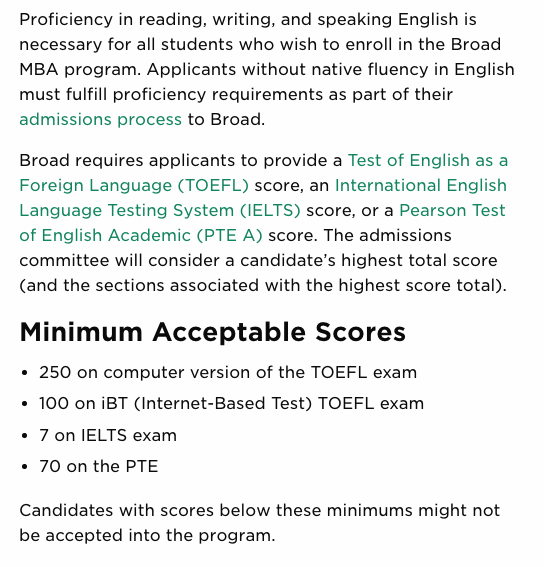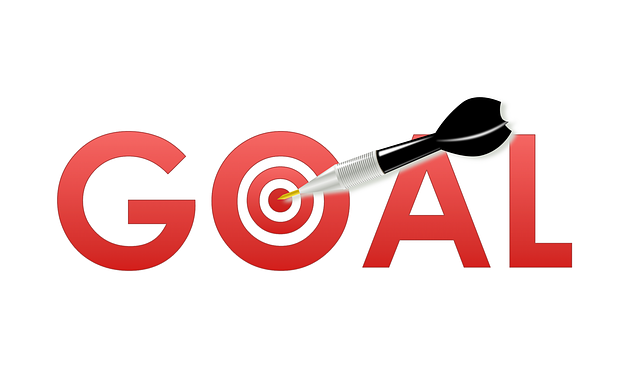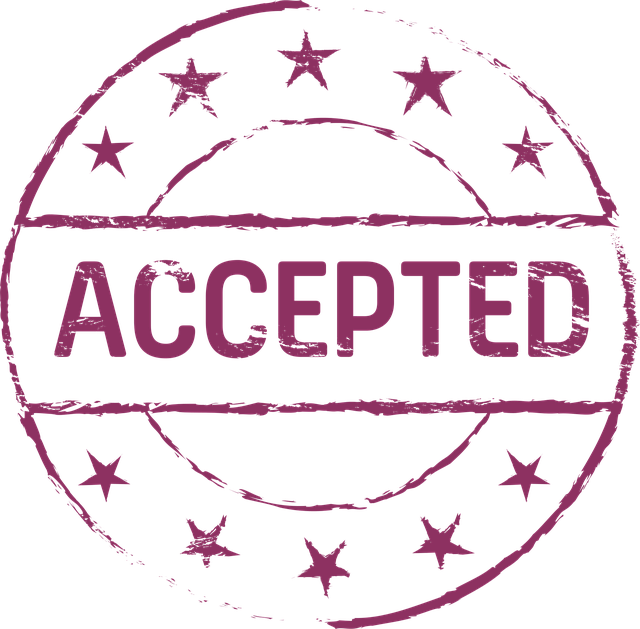
Many colleges and universities in the US have stopped requiring SAT and ACT scores. But what about the TOEFL? Are there still TOEFL requirements for universities? The answer is yes—many US schools require international applicants to submit TOEFL scores. But the exact TOEFL score you’ll need for admission ultimately depends on where you’re applying.
In this article, we explain what good TOEFL scores for colleges are and give you a list of 64 popular US schools and their minimum TOEFL score requirements. We also teach you how to find minimum TOEFL scores for US universities and how to set a TOEFL goal score.
What Are Good TOEFL Scores for Colleges?
Simply put, any score that gets you into the school you wish to attend is a good TOEFL score. In other words, a good TOEFL score can be considered anything equal to or higher than the minimum required TOEFL score for your program. (If you’re applying to more than one school, however, a good score will be one that can get you into all of your programs—i.e., the highest minimum TOEFL score among your programs. We’ll explain this in more detail later.)
As you might’ve guessed, minimum TOEFL requirements for universities can vary widely. Some schools require rather high 100+ TOEFL scores, whereas others require scores in the 80s, 70s, or even 60s. According to a US News article, the average TOEFL minimum requirement for US universities is 78. Generally speaking, the more competitive a school is, the higher minimum TOEFL score it’ll require. (However, not all highly ranked schools maintain TOEFL score minimums; in fact, some don’t even require TOEFL scores at all!)
So in the end, what kind of TOEFL score will you need to get? Read on to learn more about the various TOEFL requirements for universities in the US and what these scores mean for you.

By the way: we have built the world's best online TOEFL course. Get online practice (TPO-sytle!) and individual grading and feedback on Speaking and Writing.
To be fair, it's possible to get a good TOEFL score studying alone. But PrepScholar is the world's most effective TOEFL course if you are worried about the TOEFL and are struggling to improve your score.
Learn how you can improve your TOEFL score by 15 points today.
US Universities TOEFL Score Requirements
In this section, we present to you a list of 64 US universities and colleges that are currently popular with international students. All schools have been arranged in alphabetical order, with each including its US News ranking and both undergraduate and graduate TOEFL score requirements for admission.
But first, a few things to note:
- Not all schools are equally strict about TOEFL score requirements. At some schools, failing to meet TOEFL requirements may instantly result in your rejection, whereas at other schools, your lower TOEFL scores may still qualify you for conditional admission or even regular admission.
- TOEFL score requirements for graduate programs typically vary by program or department, with some programs occasionally requiring higher scores than those required by the overall university.
- Some schools or programs only accept TOEFL iBT scores, not TOEFL PBT or revised TOEFL paper-delivered scores. That said, the TOEFL iBT is far more commonly administered than the revised TOEFL paper-delivered test anyway, so this likely won’t affect you.
And with that, let’s take a look at the chart!

Required vs. Recommended TOEFL Scores
As you can see in the chart above, some schools maintain both minimum TOEFL requirements and recommended TOEFL scores. So which score should you try to get?
In these cases, always aim for the recommended score. This is because applicants who are able to attain the recommended score will most likely take precedence over those who are only able to attain the minimum required score. So essentially, you’ll have a far better chance of getting accepted if you can attain at least the recommended score.
That said, if you are only able to hit the required minimum score, you still have a shot at admission, so long as the rest of your application is strong.
How to Find TOEFL Requirements for Universities
Before you apply for school, it’s critical you know the TOEFL requirements for your schools and the types of scores you’ll need in order to give yourself the best chance of admission. Here, we go over how to find minimum TOEFL score requirements for undergraduate and graduate programs.
For Undergraduate Programs
With undergraduate programs, TOEFL score requirements are typically established by the overall college or university—not by individual programs.
Start your search by typing in “[School Name] TOEFL requirements” or “[School Name] TOEFL minimum score” on Google. As you search, look for any pages on your school’s official website, especially those revolving around admission requirements, application materials, international students, freshmen, and FAQs.
Once on a page, use ctrl + F to search for “TOEFL” or “English” and see whether there are any references to the TOEFL or test score requirements in general. For example, here are MIT’s TOEFL requirements and recommended TOEFL scores for undergraduates. As you can see in this screenshot, MIT’s TOEFL information is both clear and easy to understand:

If you’re struggling to find TOEFL score information but know that your school requires the TOEFL for admission, contact your school directly to inquire about whether they have any TOEFL minimums or recommended scores for international applicants.

For Graduate Programs
If you’re applying for a master’s or doctoral program, the process for finding your schools’ TOEFL score requirements will differ slightly. Unlike undergraduate programs whose TOEFL requirements are typically set by the overall university, most graduate programs and departments set their own TOEFL requirements. Usually, these TOEFL score requirements will either match or exceed the university’s required minimum.
To find your particular program’s minimum required TOEFL score, look for your program’s or department’s official webpage. For example, if you were applying for a Master’s of Business Administration at the Michigan State University, these are the TOEFL requirements you’d have to meet:

As you can see in this screenshot, the minimum TOEFL scores for the MBA program are 100 iBT or 250 iBT, depending on how you take the exam.
If TOEFL requirements are not mentioned on your program’s homepage, look for any pages relating to international applicants, application materials, or admission requirements. In the screenshot above, I could click a couple of the links—such as the “Admission Information” or “Application Materials” pages—to try to find information on TOEFL scores.
If your program doesn’t list or maintain TOEFL score requirements, contact your program or department and ask about what kinds of TOEFL scores they generally prefer applicants to have.

How to Set a TOEFL Goal Score in 3 Quick Steps
As a reminder, a good TOEFL score is any score high enough to get you into the school you wish to attend. But to ultimately attain a good TOEFL score, you must first figure out what a good score is for you and your schools.
This is why it’s so important to set a TOEFL goal score. Your goal score is the score most likely to get you into all of the schools to which you’re applying. Here are the steps you’ll need to follow in order to set your own TOEFL goal score today.
Step 1: Make a Chart
Begin by making a chart with all of the schools to which you want to apply. Fill in your school names in the leftmost column and then write “TOEFL Required?” “Minimum TOEFL Score,” and “Notes” across the top of your chart.
Let’s use an example: Saya is applying to electrical engineering doctoral programs in the US. Here’s how she’d fill out her chart:
| Schools | TOEFL Required? | Minimum TOEFL Score | Notes |
| MIT | |||
| Caltech | |||
| Georgia Tech | |||
| Rensselaer Polytechnic Institute |
Step 2: Find TOEFL Score Information Online
Your next step is to look for minimum required TOEFL scores (or recommended TOEFL scores) for each of your schools. (If you’re a graduate student like Saya, you’ll want to instead look for TOEFL score information for your specific programs.) To find schools’ TOEFL score information, follow the steps above for undergraduate and graduate programs.
Want to improve your TOEFL score? We have the world's leading TOEFL course.
Built by world-class instructors from Harvard and MIT, the course offers individual review, interactive lessons, and realistic online praactice, at an affordable price! It's the fastest way to get your target TOEFL score.Remember, not all schools or programs require TOEFL scores for admission. (Some allow you to submit SAT, ACT, or GRE scores in place of TOEFL scores.) Moreover, if a school offers a recommended TOEFL score instead of or in addition to a minimum required TOEFL score, be sure to note the recommended score in your “Minimum TOEFL Score” column.
Back to our example: Saya discovers that MIT’s TOEFL requirements are listed on an FAQ page and that Caltech doesn’t maintain any minimum TOEFL score requirements. She also sees that Georgia Tech’s doctoral program requires a minimum 100 TOEFL iBT score and that Rensselaer’s Department of Electrical, Computer & Systems Engineering requires a minimum 88 TOEFL iBT score (although its average score is significantly higher at 110).
Saya records all of this information in her chart as follows:
| Schools | TOEFL Required? | Minimum TOEFL Score | Notes |
| MIT | Yes | 100 iBT/600 PBT | |
| Caltech | Yes | None | |
| Georgia Tech | Yes | 100 iBT/550 PBT | |
| Rensselaer Polytechnic Institute | Yes | 88 iBT/570 PBT | Average score of admitted applicants = 110 iBT |
Step 3: Determine Your Goal Score
Your final step is to select the highest minimum (or recommended) TOEFL score on your chart; this score will be your TOEFL goal score—i.e., the score most likely to get you into all of the schools to which you’re applying.
So in our example above, the highest minimum TOEFL iBT score on Saya’s chart is 100 for MIT and Georgia Tech. Although this score is indeed likely to get Saya into all of her programs, if she wanted to be an even more competitive applicant, she could instead raise her goal score to 110—the average TOEFL score of admitted applicants to Rensselaer’s electrical engineering graduate program.
In the end, it’s up to you to decide how high you’d like to aim on the TOEFL. In most cases, it’s ideal to aim for the highest score on your chart, as this pretty much guarantees that your TOEFL score will be good enough for admission. But if you’d like to be an extremely competitive applicant, you can always instead aim a few points higher than your goal score.

Key Takeaways: TOEFL Scores for Colleges
To summarize, good TOEFL scores for colleges are simply any scores that can get you into the programs you wish to attend. Thus, good scores are essentially the same as minimum required TOEFL scores. But as we’ve learned, TOEFL requirements for universities can vary widely, with some schools requiring lower TOEFL iBT scores in the 70s and others requiring far higher scores in the 100s.
To find your schools’ TOEFL score requirements, go to your schools’ official websites and use keywords such as “TOEFL” and “English” on various pages, particularly those dealing with admission requirements and application materials. Most schools will usually maintain a single undergraduate TOEFL score requirement and various TOEFL score minimums for graduate programs.
In addition to a minimum TOEFL score, a school may offer a recommended TOEFL score, which is the score you’re far more likely to need in order to actually qualify for admission; therefore, you should always aim for the recommended score over the minimum required score.
To set a TOEFL goal score, make a chart and then go online to find your schools’ TOEFL requirements. Finally, select the highest minimum TOEFL score on your chart to get your goal score. Your goal score is the score most likely to get you into all of your schools and the one you’ll ultimately aim for on test day.
What’s Next?
Want to learn more about TOEFL scoring and what a good TOEFL score is? Our guides explain how the scoring process works as well as what scores are considered excellent, good, and poor on the TOEFL.
Trying to hit your TOEFL goal score? Get tips on preparing for the TOEFL and use any of our top picks for TOEFL prep books for high-quality practice and guidance.
Want information about other test scores? Learn what SAT scores you’ll most likely need in order to attend college in the US!
Ready to improve your TOEFL score by 15 points?
Download our best TOEFL Strategy eBook (valued at $14.49) for FREE! Learn the top 5 strategies you must know to improve your TOEFL score. Download it for free now:
